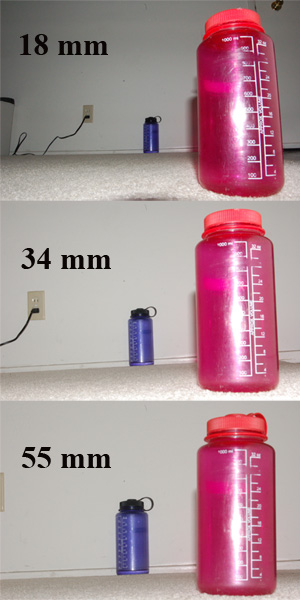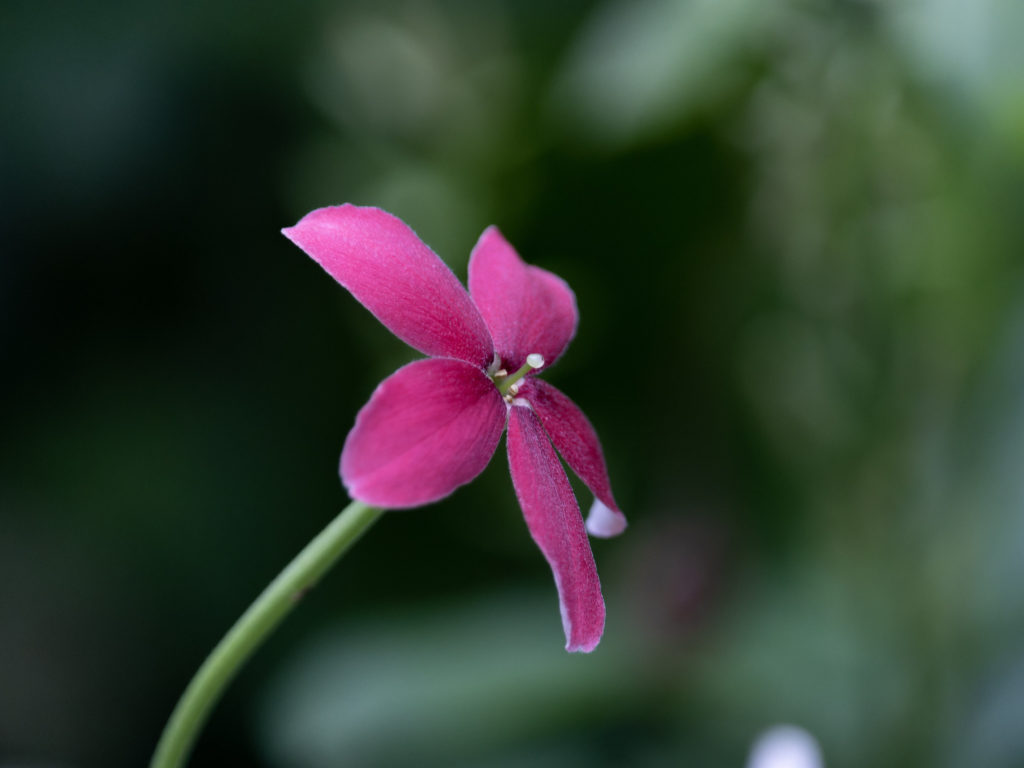When we take a photo with a shorter focal length, the background feels far away from the subject. There’s a clear, visible distance between the subject and the background. As we slowly increase our focal length while keeping the same framing, the background starts feeling magnified and closer to the subject. It feels like as if the background is being squeezed together or compressed. This is lens compression or background compression.
It may be surprising to know that this is a kind of distortion too. With a longer focal length, if we want to keep the same frame, we have to take a few steps back to avoid cropping in. This increase in distance to subject makes the background appear closer and bigger than it actually is.
Here’s a photo from Wikipedia. Three photos capturing the same frame from three different focal lengths. Notice how, in the 55mm photo, the wall and the bottle seems quite close to the subject. The bottle in the back also looks bigger.

I personally understood this concept better from this video from Mitch Lally on youtube. In this video, while discussing the prime lens choices, he talks about the background compression we can get while using longer focal lengths. It’s a very informative video.
He discusses the background compression with photo examples from 3:10.
Not a Lens Function
The main reason for background compression is that we compose our shot from distance. The more distant we are, we would get more background compression. The focal length doesn’t affect this directly. However when we use a longer focal length, our view gets cropped, so we have to take a step back to get the same frame we had with a shorter focal length. This stepping back to get our subject in frame – this distance causes the background compression. Not the lens or it’s focal length.
I have heard people say in photography community that longer focal lengths provide more background compression. Which seems to be true. But in reality, it’s us stepping back with longer focal lengths which causes the background compression.
Application in Photography
A bit of background compression and some nice background blur can make the bokeh really nice, smooth in the end. These two photos were captured with longer focal lengths to produce nice bokeh.


On the other hand if you want to show off your background along with your subject, you want to use a lens with shorter focal length to avoid compressing the background.
Background compression is often preferred while shooting portraits. This is why I see many professional photographers using a long focal length for their professional portraits. Canon EF 85mm f/1.8 or Canon EF 135mm f/2L are chosen not just for background blur but also for the background compression.
This is a photo of my wife I took at 200mm. We can see how the subject stands out against the background.

Pingback: Creating Background Blur - Masnun | Photography
Pingback: Focal Length for Portraits - Masnun | Photography